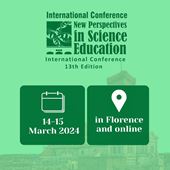Integration of ICTs into Physics Education: Exploring the Brachistochrone with Blender and Tracker
Thiago Lacerda Almeida, Programa de Pós-Graduação em Ciências Naturais, Universidade Estadual do Norte Fluminense Darcy Ribeiro (Brazil)
Carla Vieira, Programa de Pós-Graduação em Ciências Naturais, Universidade Estadual do Norte Fluminense Darcy Ribeiro (Brazil)
Adriana Cardinot, Universidade Estadual do Norte Fluminense Darcy Ribeiro, Laboratório de Ciências Físicas (Brazil)
Leonardo Mota, Universidade Estadual do Norte Fluminense Darcy Ribeiro, Laboratório de Ciências Físicas (Brazil)
Maria Priscila Castro, Universidade Estadual do Norte Fluminense Darcy Ribeiro, Laboratório de Ciências Físicas (Brazil)
Abstract
This study examines the integration of Information and Communication Technologies (ICTs) into formal Physics education, focusing on their application through the brachistochrone— the curve of shortest time between two points under gravity [1]. Despite their potential as pedagogical tools, ICTs face obstacles such as unequal access in regions with poor infrastructure and inadequate teacher training for effective implementation [2]. Using Blender and Tracker software, teaching strategies were developed to make this concept accessible and visually engaging for high school students. Blender was employed to model and simulate the 3D trajectory of the brachistochrone, while Tracker facilitated a detailed video analysis of motion along the curve. A 3D-printed brachistochrone enabled comparative analysis between the simulated and physical models. These digital tools bridge theory and practice, providing an interactive and meaningful learning experience [3]. The study highlights the challenges and opportunities of using ICTs in public schools, emphasising their role in modernising teaching practices and fostering critical thinking [4].
|
Keywords |
Information and Communication Technologies, Physics Education, Blender, Tracker |
|
REFERENCES: |
[1] Agmon, D., & Yizhaq, H. (2020). From the discrete to the continuous brachistochrone: a tale of two proofs. European Journal of Physics, 42(1), 015004. https://doi.org/10.1088/1361-6404/abaf41 [2] Ra, S., Chin, B., & Lim, C. P. (2016). A holistic approach towards Information and Communication Technology (ICT) for addressing education challenges in Asia and the Pacific. Educational Media International, 53(2), 69–84. https://doi.org/10.1080/09523987.2016.1211334
[3] Haleem, A., Javaid, M., Qadri, M. A., & Suman, R. (2022). Understanding the role of digital technologies in education: A review. Sustainable Operations and Computers, 3(3), 275–285. https://doi.org/10.1016/j.susoc.2022.05.004 |
 New Perspectives in Science Education
New Perspectives in Science Education





























